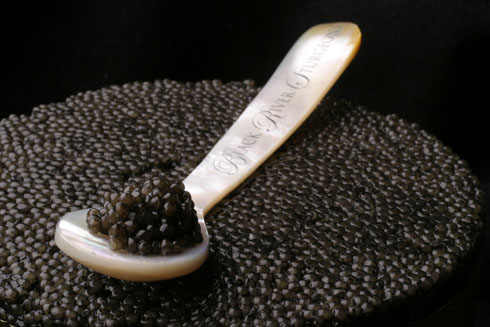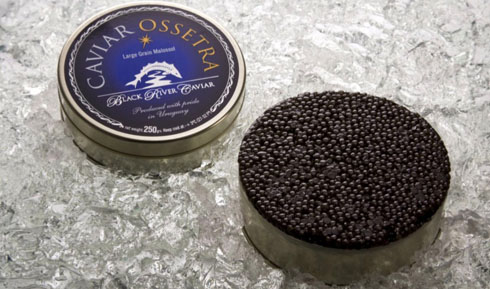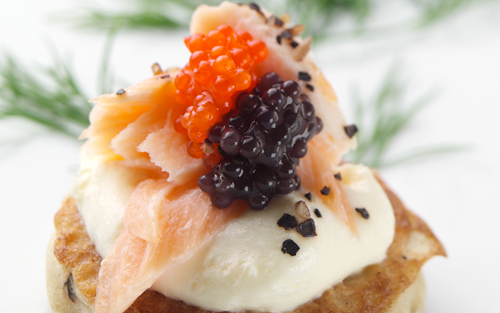Enjoying Fine Caviar – Top 10 Do’s and Don’ts

Courtesy of: Black River Caviar
Caviar has long been one of the most luxurious foods in the world. Whether you’re a fine connoisseur or new to the world of caviar, learning the proper care and eating etiquette of caviar is a must.
These pricey fish eggs came mostly from the sturgeon and salmon. Caviar, particularly the Russian variety, has become synonymous with wealth and luxury. The most expensive varieties of caviar came from three varieties of the sturgeon fish: the beluga, the osetra and the sevruga.
The United States consume about 80% of the world’s caviar. The traditional method of enjoying caviar is by scooping a small portion of caviar using a non-metallic, and usually a mother of pearl spoon onto either blini or crackers.
For the high end consumer, caviar can be one of most desired and exclusive delicacies on the market, but knowing the correct way to consume caviar can often be a mind-boggling experience.
Black River Caviar, cultivated in Uruguay and the only “Wild-Raised”™ caviar provider in the world, has released enlightening tips for hip and trendy socialites as well as novice consumers who seek to have the best experience when eating caviar. Education and quality are of utmost importance to better enjoy fine caviar in a safe and satisfying way.
“Caviar is one of the most pleasurable foods in the world but it can also be one of the most intimidating,” says Black River Caviar President Graham Gaspard. “It is such a unique delicacy that can completely change its flavor depending on how and when it is eaten.”

Courtesy of: Black River Caviar
Black River Caviar offers the Top 10 Do’s and Don’ts for Enjoying Caviar, helping the everyday epicure to the aspiring connoisseur get the most out of their caviar experience:
Do:
1. Consume caviar within one week of receiving the product, otherwise it looses its freshness and starts to perish.
2. Serve caviar in small doses, no more than one ounce per guest when serving hors d’ouevres at a party. It is best in small amounts due to its delicate taste.
3. Preserve your caviar’s freshness by covering it with plastic wrap and making sure the tin is tightly sealed, as it is an easily perishable product.
4. Make sure your caviar tastes clean and not fishy. When you try the caviar, if it tastes muddy or fishy, you know it’s not quality caviar created from a sustainable environment. This could also mean it’s past its prime.
5. Keep pairings to dry wines, vodka or champagne – strong, perfumey-tasting liquors will overpower the taste and not compliment it well.
Don’t:
1. Use metallic spoons when serving caviar, as it gives it a tinny taste.
2. Store caviar in the freezer – it is supposed to be stored between 26 to 32 degrees Fahrenheit in the coldest part of the refrigerator.
3. Serve your caviar with too many spices; it will drown out the flavor and doesn’t compliment caviar well.
4. Assume that caviar is high in quality just because it is expensive; it is more important to look at when and where the caviar was harvested in order to discover its true quality.
5. Avoid purchasing wild caviar that’s not farm-raised because it may not be from a trusted source. Caviar may be unsafe to consume if it has been exposed to pollution, the black market or overfishing when harvested.
About Black River Caviar Black River Caviar is the ninth largest exporter of caviar to the U.S. and the only one of its kind harvested with its unique, “wild-raised” farming techniques in the heart of the Rio Negro, Uruguay. With its unique harvesting conditions, sustainable quality, exclusivity, and quick delivery turnaround, Black River Caviar proves to be the most distinctive caviar on the market.
Please contact Black River Caviar at 1-888-315-0575 or online at www.blackrivercaviar.com for more information on what makes them the rarest caviar producer in the world.
